McShane, John Thomas (Pilot Officer)
Killed in Action 1945-02-01
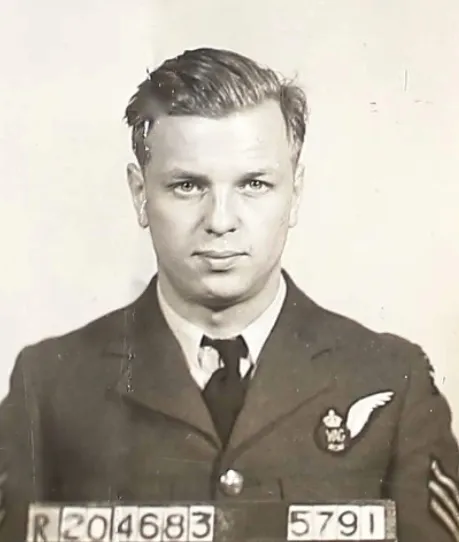

Birth Date: 1920
Born:
Son of Robert Martin McShane and Orpha Evelyn McShane; husband of Ivy McShane, of Kamloops, British Columbia.
Home: Coquitlam, British Columbia
Enlistment:
Enlistment Date: Unknown
Service
RCAF
Unit
433 (B) Sqn- Squadron
Qui S'y Frotte S'y Pique Who opposes it gets pricked
Base
Rank
Pilot Officer
Position
Pilot Officer
Service Numbers
J/89146
Prev: R/204563
Target
 Ludwigshafen Germany
Ludwigshafen Germany
Lancaster Mk.I NG460
Bombing 1945-February-01 to 1945-February-01
433 (B) BG (RCAF) Skipton on Swale
On 1945-02-01, Squadron Leader A. Ross Dawson, the Chief Technical Officer with 424/433 Sqns at Skipton on Swale, wrote in his diary:
Warning: The following material contains graphic content that may not be suitable for all readers.
". . . Got prepared for 7 Lancs from each sqdn toting no less than 1 -4000 pounder &14 five hundred pound incendiaries all the way to Ludwigshafen . . . when they returned poor old Squadron Leader Stinson was missing in 433 A Able. We had seen flames of a crash in the distance but hadn't figured out it was one of ours. Nonetheless it was Stinson who had piled in over near Dalton in a terrific smash-up. Two of the crew bailed out in time but the other 5 bought it. Fri Feb 2: Got up bright and early to rush over and investigate this latest crash. What a horrible mess it was. It looked like he was in a power dive when he went into the deck at about a 30 degree angle & there sure wasn't much left. Three of the 4 engines were buried in the mud out-of-sight with only the tip of one prop blade showing. The fourth engine had been torn out & was burst open along side. Part of the kite had skidded forward & set fire to a farmer's haystack which was still burning when I got there. It was a pretty grisly sight . . . They had enough parts together to make up approximately four bodies but one is still missing in the wreckage somewhere. The only explanation about why it piled in was from the story of the two crew members who bailed out. They were badly shot up with flak over the target & it is thought his controls must have suddenly given way.
Diary of A Ross Dawson, courtesy CWM
Crash site of NG460 Skipton on Swale 1945-02-01
Lancaster NG460
Avro Lancaster

Canadian Warplane Heritage Museum
The Avro Lancaster is a British Second World War heavy bomber. It was designed and manufactured by Avro as a contemporary of the Handley Page Halifax, both bombers having been developed to the same specification, as well as the Short Stirling, all three aircraft being four-engined heavy bombers adopted by the Royal Air Force (RAF) during the same wartime era.
The Lancaster has its origins in the twin-engine Avro Manchester which had been developed during the late 1930s in response to the Air Ministry Specification P.13/36 for a capable medium bomber for "world-wide use". Originally developed as an evolution of the Manchester (which had proved troublesome in service and was retired in 1942), the Lancaster was designed by Roy Chadwick and powered by four Rolls-Royce Merlins and in one version, Bristol Hercules engines. It first saw service with RAF Bomber Command in 1942 and as the strategic bombing offensive over Europe gathered momentum, it was the main aircraft for the night-time bombing campaigns that followed. As increasing numbers of the type were produced, it became the principal heavy bomber used by the RAF, the Royal Canadian Air Force (RCAF) and squadrons from other Commonwealth and European countries serving within the RAF, overshadowing the Halifax and Stirling. Wikipedia
433 (B) Sqn Qui S'y Frotte S'y Pique ("Porcupine")
History of the Squadron during World War II (Aircraft: Halifax III, Lancaster I, III)
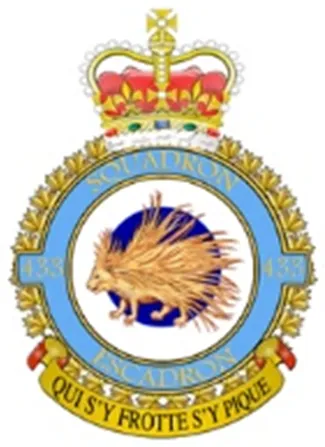
433 Squadron was the 14th and last bomber squadron of the RCAF to be formed overseas in WWII. It was formed in September 1943 as a unit of No 6 (RCAF) Group of Bomber Command. It flew from Skipton-on-Swale, Yorkshire, UK for the whole of its operational career. With the squadron code letters BM, it originally flew Handley Page Halifax Mk III heavy bombers on its bombing missions, but these were replaced by Lancaster Mks I and III in January 1945. After the cessation of hostilities the squadron was retained in England as a unit of No 1 Group RAF from August 1945, and took part in the airlift of PoWs back to England (Operation EXODUS) and the bringing back of troops from Italy (Operation DODGE). The squadron was disbanded at Skipton in October 1945.
In the course of its operations, the squadron flew 209 missions involving 2316 individual sorties for the loss of 38 aircraft , dropping 7486 tons. Awards to crew members included 132 DFCs, 2 Bars to DFC, 9 DFMs, 1 BEM, 14 MiDs and 1 Air Medal (USA). Battle Honours were: English Channel and North Sea 1944-45, Baltic 1944-45, Fortress Europe 1944, France and Germany 1944-45, Biscay Ports 1944, Ruhr 1944-45, Berlin 1944, German Ports 1944-45, Normandy 1944, Rhine, Biscay 1944.Wikipedia, Kostenuk and Griffin
Squadron History (Bomber Command Museum PDF)
Maps for Movements of 433 Squadron 1943-45
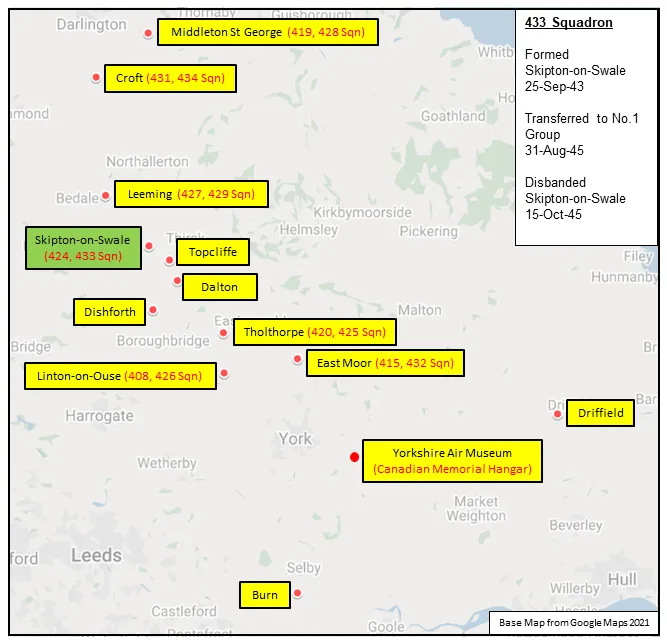
433 Squadron History Summary 1943-45
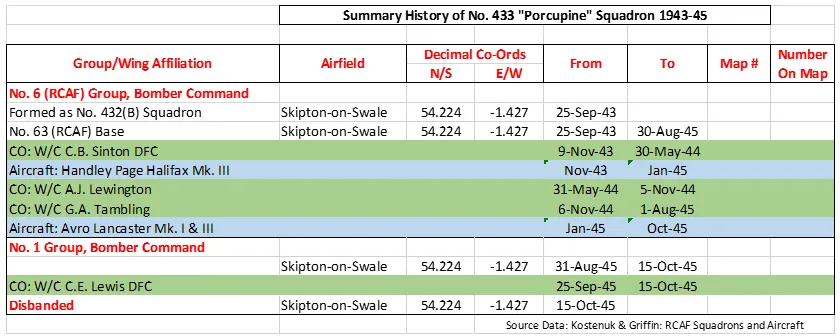
History of the Squadron Post-WWII (Aircraft: Canuck, Freedom Fighter, Hornet)
The squadron re-formed as an All-Weather (Fighter) unit at CFB Cold Lake, Alberta , on 15 November 1954, as one of nine CF-100 squadrons to defend Canadian airspace. It moved to CFB North Bay, Ontario , in October 1955, the squadron flew CF-100 Canuck aircraft on North American air defence. However, in 1961 the Government decided to reduce the number of CF-100 squadrons from nine to five and 433 Squadron was dissolved for a second time on July 31st, 1961.
Reformed post-unification on 15 August 1968, as No. 433 Escadrille tactique de combat it was a French language squadron of Mobile Command based at CFB Bagotville, Quebec . The squadron flew the CF-5 Freedom Fighter in the tactical and reconnaissance role until it converted to the CF-188 Hornet fighter jets in 1984. The squadron was deactivated in 2005, and its assets and personnel amalgamated into 425 Tactical Fighter Squadron. Besides being originally designated as one of two bases of NATO's Rapid Reaction Force, the 433 Squadron was entrusted a NORAD role in December 1988. The 433 Squadron members in Bagotville played an important role in the Gulf War conflicts, better known under the names Operation FRICTION in 1991 and Operation ECHO in 1999. By September 2001, the Squadron was actively participating with NORAD in the fight against terrorism through Operation NOBLE EAGLE. On July 14th, 2005, the standards of the Squadron were once again laid aside almost 62 years after its initial formation. .Wikipedia
The squadron was reactivated on 9 June 2015, and celebrated its 75th anniversary on 15 September 2018.
 Canadian Virtual War Memorial
Canadian Virtual War Memorial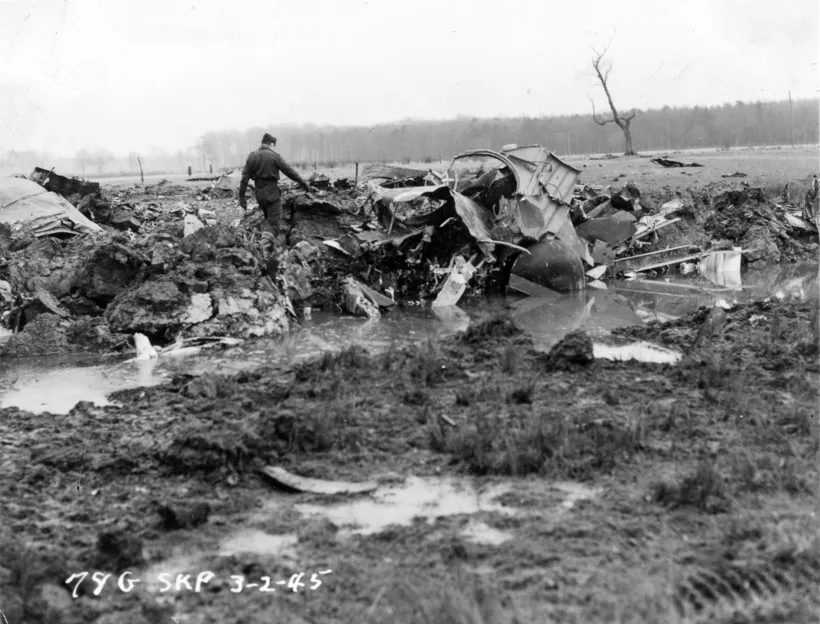
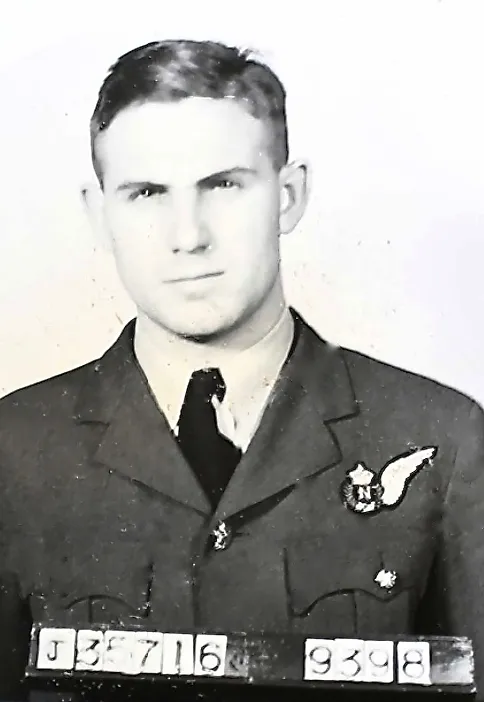
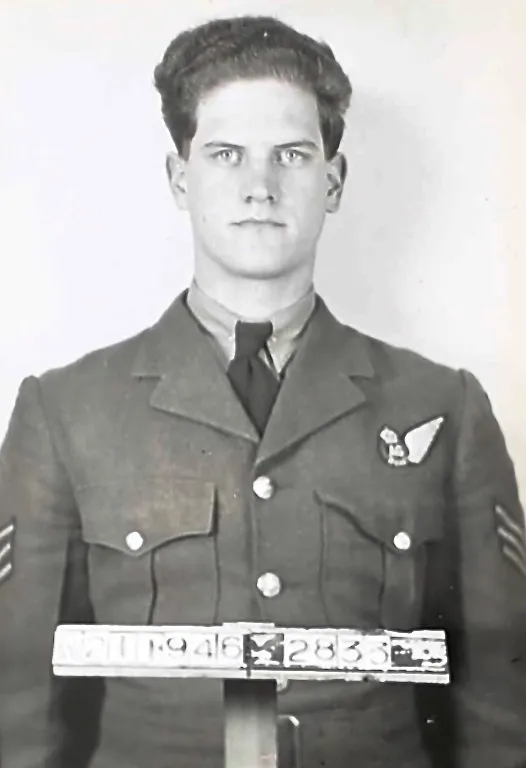
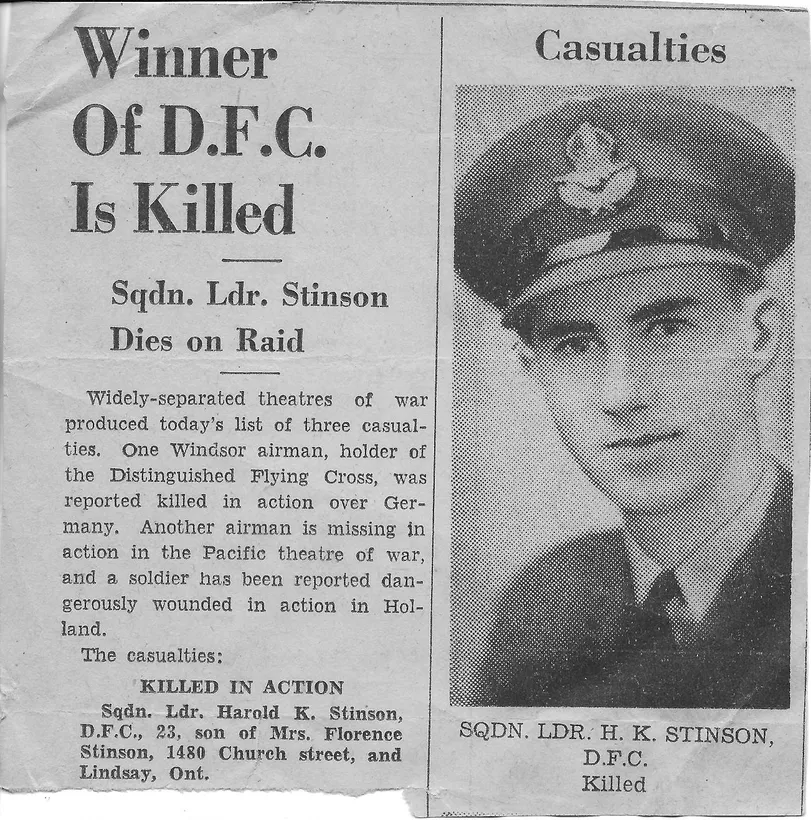
 Lancaster Bomber
Lancaster Bomber Wikipedia
Wikipedia Harold A Skaarup Web Page
Harold A Skaarup Web Page